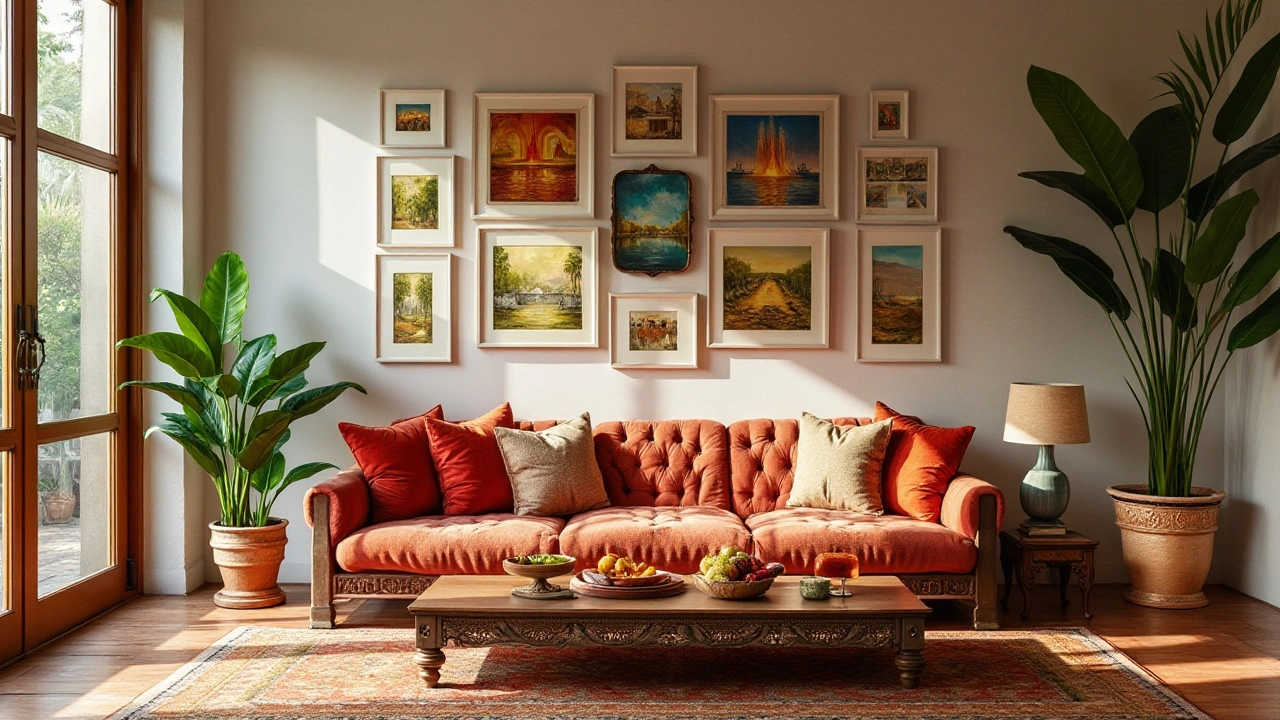Hanging Pictures: Transform Your Space with Simple Wall Art Strategies
When working with hanging pictures, the act of attaching artwork or photographs to a wall to create visual interest. Also known as wall art placement, it lets you shape a room’s mood, balance colors, and showcase personal memories. This central practice often starts with choosing the right picture frames, protective borders that highlight the image and influence perceived scale. A good frame can make a modest print feel like a statement piece, while a mismatched frame may distract from the composition. Hanging pictures also ties closely to wall art, any decorative element mounted on a wall, from canvases to prints and textiles. Understanding how wall art interacts with room lighting, furniture layout, and existing color palettes is essential for a cohesive look. A common semantic link is that hanging pictures encompasses wall art, and successful execution requires thoughtful picture frame selection. Experts often say that the right combination of frame, placement height, and spacing influences how a space feels—larger frames draw the eye upward, tighter spacing creates intimacy, and varied heights add dynamic energy. Below we’ll explore how to move from a single piece to a full gallery wall, a curated arrangement of multiple artworks that together form a visual narrative, and why this approach can become a focal point for any room.
Planning Your Gallery Wall and Beyond
A gallery wall is more than just a cluster of pictures; it’s a design tool that lets you balance colors, textures, and themes across a single surface. To start, assess the interior design, the overall style and functional needs of your space. If your living room leans modern, choose sleek frames and black‑and‑white photography; for a cozy farmhouse vibe, opt for rustic wood frames and warm family photos. The layout process requires measuring wall space, drafting a mock‑up on the floor, and testing sight lines—this planning phase helps you avoid cramped clusters or poorly aligned edges. One practical tip is to anchor the arrangement with a larger piece at eye level (about 57‑60 inches from the floor) and then fill around it, maintaining a consistent gap of 2‑3 inches between each frame. This spacing rule creates visual breathing room and ensures the wall doesn’t feel overloaded. When you move from a single picture to a gallery, the relationship between picture frames and wall art becomes a conversation: frames act as the vocabulary, while the art supplies the story. Choosing a unified color palette for frames—whether all black, all white, or mixed metals—ties the pieces together, whereas mixing frame styles can convey eclectic charm but demands a stronger underlying theme to avoid chaos. Another semantic connection is that gallery walls enable the display of varied mediums, such as canvas prints, vintage postcards, and textile art, each adding depth to the visual narrative. Don’t forget the role of lighting; directional wall sconces or picture lights can highlight key pieces and add ambience, reinforcing the home decor intentions of the space. By treating the wall as a curated gallery, you turn ordinary corridors into memorable showcases that reflect your personality. Armed with these basics, you’ll find that hanging pictures isn’t just a chore—it’s a chance to curate a personal museum inside your home. Below you’ll discover detailed guides, step‑by‑step tutorials, and creative ideas that take you from picking the perfect frame to mastering large‑scale gallery layouts. Dive in and start turning blank walls into storytelling canvases.
